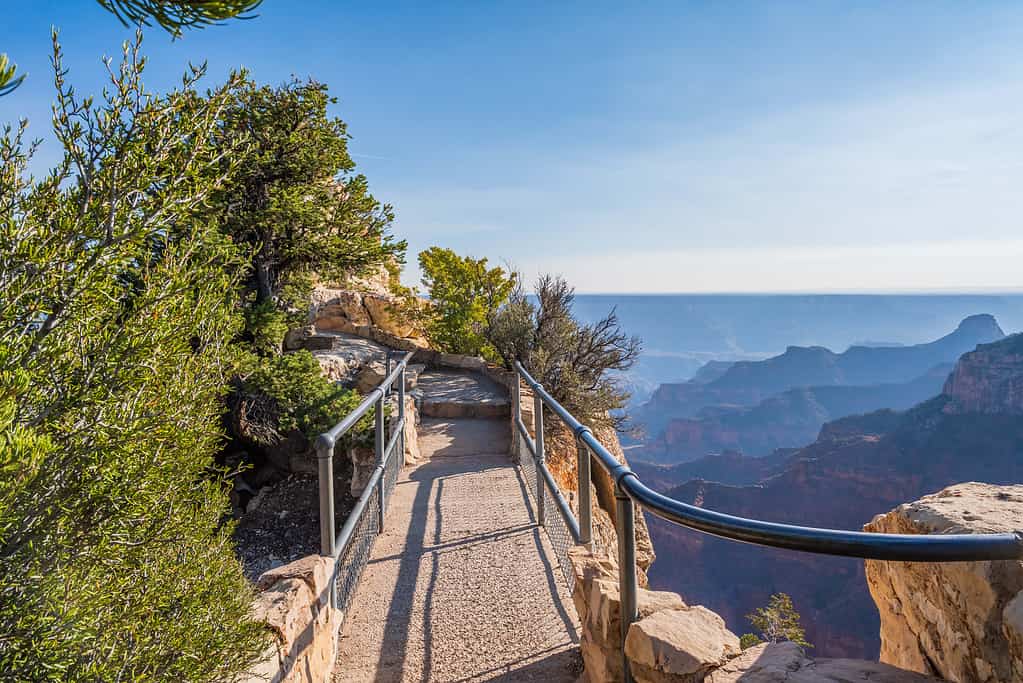The U.S. boasts of rich history, and each state holds its own story. Did you ever take the chance to explore the meaning behind your state’s name? Today, we’ll be diving into Arizona’s origin.
Analyzing the meaning of each state’s selected name can teach you about its past, establishment, and integral leaders who contributed to its creation as a state. However, it’s not always clear where these state names came from, with some being more obvious than others. Many skeptics theorize about their possible roots.
Specifically, the state name Arizona has multiple theorized connotations. Some people believe the name Arizona came from a place in modern-day southern Arizona and northern Mexico that the Spanish used to call “Arisona” or “Arissona.” Other experts think the name derived from “Al Shon,” which translates to “Place of Little Spring.”
Regardless of Arizona’s meaning and derivation, the southwestern state is well-known for its brutally-hot climate and gorgeous landscapes. In fact, it’s home to one of the hottest cities in the country: Phoenix. It also features the well-known Grand Canyon in the northwestern corner of the state, with the Colorado River flowing through the canyon.
Arizona has many nicknames, different landforms, and vast wildlife throughout the state. Here’s how Arizona got its name, what it means in different cultures, and a list of its official state animals and other wildlife.

Arizona is a dry, hot state with deep spiritual history, thanks to the many tribes that still reside there.
©Natalia Bratslavsky/Shutterstock.com
How Did Arizona Get Its Name?
It is unclear where Arizona got its name. However, there are many different theories by various state explorers and historians, striking controversy among experts and state residents today.
The first theory is that Spanish explorers created the name from the area that is now southern Arizona/northern Mexico. Back then, the Spanish called the area Pimería Alta, or Upper Pima Country, because the natives of the area were name Pima. There was also a specific region of this area called Arisona or Arissona by the Spanish, and many believe that’s where the state got its name today. The theory suggests that the name derives from the Spanish phrase “zona árida” which translates to “dry region” — which is fitting for the dry, hot state.
A second theory by Historian James H. McClintock is that the state got its name from “Al Shon,” which translates to “Place of Little Spring.” Today, Arizona actually has a small spring called Little Spring that has an elevation of 6,407 feet.
State Historian Marshall Trimble, on the other hand, sides with interpreter Donald T. Garate, whose studies evidence that the name’s origin came from a Basque word that meant “The Good Oak Tree.” According to many historians, a Mexican explorer with Basque heritage founded a place called Arizona, which is now modern-day Sonora and is in the northwest region of Mexico that borders the state of Arizona.
Before it became a U.S. state, Arizona was a small part of Mexico in the early 1800s. Spanish settlers initially explored the land in the mid-1500s, and many Native American tribes inhabited the area as well. In fact, there are still 22 federally recognized tribes in Arizona today. It’s believed that they contributed to the creation of the name “Arizona.”
Arizona Meaning in Other Languages and Cultures
Arizona has various meanings in different cultures. As stated above, in Basque, the name Arizona translates to “The Good Oak Tree.” In Spanish, it can loosely translate to “dry, barren region.” Arizona is also known as the Pima Indian word “Ali shonak,” which translates to “small spring place,” as well as the Aztec word “arizuma,” which means “silver-bearing.”
Arizona is a highly spiritual place, with Sedona, Arizona, deemed a “spiritual vortex” of sorts. Many Indigenous tribes deemed the area as sacred due to its spiritual significance, believing the Great Spirit Mother gave birth to the human race in Boynton Canyon in Sedona.
Many spiritual individuals also believe that every name carries a specific vibration or energy. In astrology, the name Arizona is associated with the sign Aquarius, which embodies innovation, independence, and humanitarianism. Additionally, since Uranus is the ruling planet of Aquarius, the name Arizona is closely tied to Uranus, which is known for eccentricity, rebellion, upheaval, and unpredictability.
Additionally, many numerologists assign Arizona a numerological value of four. In numerology, the number four represents practicality, stability, security, intelligence, confidence, and discipline. This symbolism closely matches the state’s grounded, unified energy.
Arizona has a great sense of community, spiritual awareness, and connection to nature. As the third in the Economic Performance category of the prestigious 2023 Rich States, Poor States report by American Legislative Exchange, Arizona has prosperous agriculture, mining, and manufacturing industries — a reflection of its hard work and commitment to success.

Though it’s known for its dry climate, Arizona features many bodies of water, including Apache Lake.
©Jon Manjeot/Shutterstock.com
How Did Arizona Get Its Nicknames?
Arizona has many different nicknames, with its most popular one being the “Grand Canyon State.” This is because most of the Grand Canyon extends throughout the Grand Canyon National Park in Arizona. It is also the greatest attraction to the state, enticing about five million visitors annually.

Because it’s home to Grand Canyon National Park, Arizona was coined the “Grand Canyon State.”
©iStock.com/Cheri Alguire
Another nickname for Arizona is “Copper State” due to its prosperous copper production in the early 1900s. The Arizona state flag actually features a copper-colored star for this reason.
According to Arizona state historian Marshall Trimble, until 1959, Arizona was actually called “Baby State” because it was the last state in admission to the union until Alaska. In fact, it was the 48th of the 50 states.
Today, many deem Arizona the “Italy of America,” as it boasts of gorgeous, mountainous scenery that compares to the mountains of Italy. Arizona has beautiful landscapes that offer visitors and residents a rich “Italian-like” atmosphere.
Some other state nicknames include:
- Sand Hill State due to its desert-like terrain.
- Sunset State due to its breathtaking state-wide sunsets, especially over the Grand Canyon.
- Valentine State due to its statehood anniversary date of February 14, 1912.
Wildlife in Arizona
Arizona’s landscapes include deep canyons, deserts, natural rock formations, and volcanic mountain ranges. With such varied habitats comes varied wildlife species, many of which live in state parks and natural hiking trails.
Arizona’s diverse geography allows for many different species of animals to roam the state, including some official Arizona state animals:
- Mammal: Ringtail Cat.
- Bird: Cactus Wren.
- Amphibian: Wright’s Mountain Tree Frog.
- Butterfly: Two-Tailed Swallowtail Butterfly.
- Fish: Apache Trout.
- Reptile: Arizona Ridge-Nosed Rattlesnake.

The ringtail cat is Arizona’s state mammal.
©Carlos R Cedillo/Shutterstock.com
Throughout Arizona, you will find many different types of wildlife. In state parks specifically, of the mammals, you’ll find coyotes, javelinas, deer, black bears, coatimundis, raccoons, and skunks, among many others. For the reptiles/amphibians of the state, you might catch chuckwallas, red-spotted toads, Gila monsters, and western diamondback rattlesnakes. And for birds, you’ll likely come across greater roadrunners and great blue herons.
The largest animal in all of Arizona is the bison, which often resides in Raymond Wildlife Area, a nearly 15,000-acre wooded and scrubland refuge, and House Rock Ranch. The bison can grow up to 6 feet and weigh up to 2,000 lbs. They can leap 6 feet in the air and run at speeds of 35 to 40 mph.
The rarest animal in Arizona is the Mexican gray wolf, which has been in danger of extinction for quite some time. This wolf’s original range was Northern Mexico, Southeastern Arizona, and Southern New Mexico.
Arizona is also home to many dangerous animals. Some of the most threatening include the American black bear, the bark scorpion, rattlesnakes, mountain lions, and bison. In terms of endangered species, Arizona features the black-footed ferret, the Mexican spotted owl, the Mexican gray wolf, and jaguars.
The photo featured at the top of this post is © Mr. James Kelley/Shutterstock.com
Thank you for reading! Have some feedback for us? Contact the AZ Animals editorial team.






